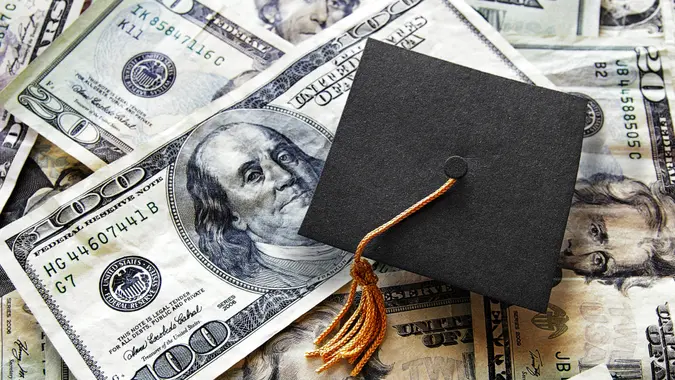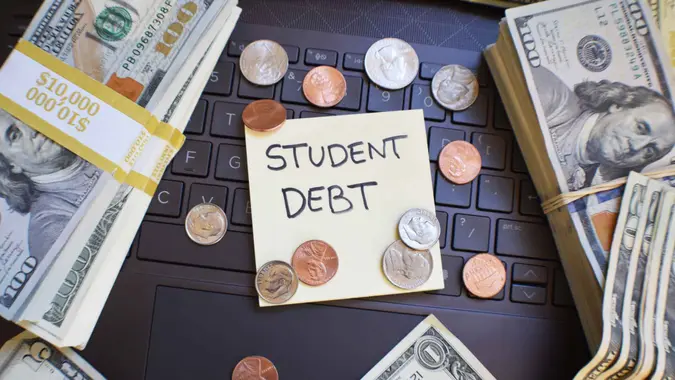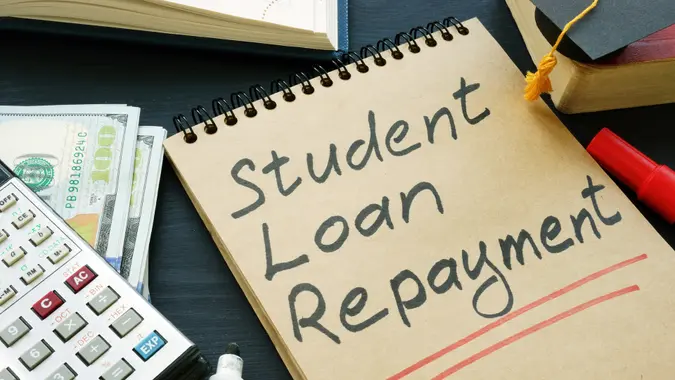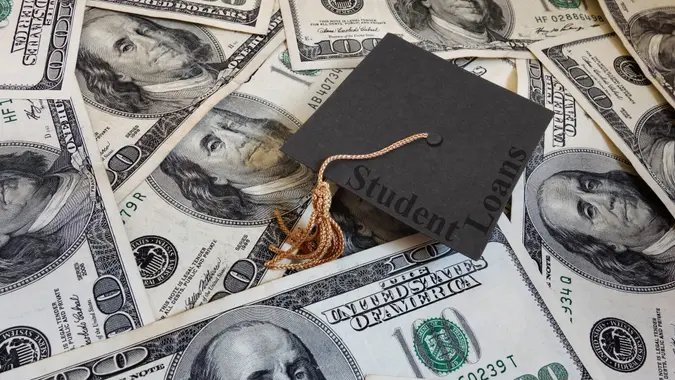I’m a Financial Planning Expert: How To Resume Student Loan Payments and Build Future Savings

Commitment to Our Readers
GOBankingRates' editorial team is committed to bringing you unbiased reviews and information. We use data-driven methodologies to evaluate financial products and services - our reviews and ratings are not influenced by advertisers. You can read more about our editorial guidelines and our products and services review methodology.

20 Years
Helping You Live Richer

Reviewed
by Experts

Trusted by
Millions of Readers
Only a few months remain before federal student loan payments are due again in October. As borrowers prepare to resume payments, some may be wondering how they can juggle student loan payments in their respective budgets and continue to build their savings.
GOBankingRates spoke to three financial planning experts about the strategic moves borrowers can start making now to ensure they’re able to get resume student loan payments without sacrificing saving for the future. These tips will allow you to start paying student loan payments again while building future savings.
Reestablish Your Budget
If you haven’t already started factoring in monthly student loan payments back into your budget, it’s time to do it.
Tom Holtam, vice president and senior regional delivery manager at UMB Bank, said making little changes in your daily spending habits, like making coffee or lunch at home or getting rid of a streaming service you don’t use, can help you find a few more dollars to go toward your student loan. Continue to track your spending and see where else you can cut back for student loan payments.
Save Money Now To Get Ahead of Schedule
The good news is federal student loan payments start again in October, so borrowers can use the next couple of months to save some money now to put toward this debt.
Krisstin Petersmarck, investment advisor representative at Bridegriver Advisors, uses the example of a borrower who has a loan payment of $500 a month. Beginning in July, they can start saving $250 from each check and continue to save this amount of money. When payments resume in October, the borrower has a three-month capacity cushion.
Where should you keep this saved money? Mark Henry, wealth management advisor at Alloy Wealth Management, recommends moving this money to a high-yield savings account. These accounts, Henry said, offer higher interest rates than a traditional savings account and will allow your money to work for you rather than just sit in the bank.
Consolidate Debt
“With your student loan payments or any other debts you have, it is worthwhile to ask if you can consolidate the debt to one loan,” Holtam said. “This will usually create one, lower monthly payment and interest rate for you to manage.
Pay Off Any High-Interest Debt
Do you have any high-interest debt, like credit cards? Petersmarck recommends paying it off as soon as possible.
Take Advantage of Employer Matching on a Retirement Plan
Does your employer offer contribution matching on an employer-sponsored retirement plan? If you said yes to this question, Henry recommends contributing enough to this plan to meet the matching requirements.
“You may not be able to max out contributions to a 401(k) or IRA while you are simultaneously making student loan payments. Be sure you are contributing whatever amount you need to take advantage of employer matching,” Henry said.
For savings and retirement, Petersmarck said the best option is to have the money taken automatically out of your check. “It is much easier to save when you don’t see the money.”
Live Within Your Means
Aside from not giving into lifestyle creep, Petersmarck said a good strategy is to save 20% of your paycheck.
“When October arrives and the loan payments are made, if you need to take some of the 20%, do it,” Petersmarck said. “But make a budget and find ways to get those savings back to 20%, and in addition, pay off the loan.”
 Written by
Written by  Edited by
Edited by 
























